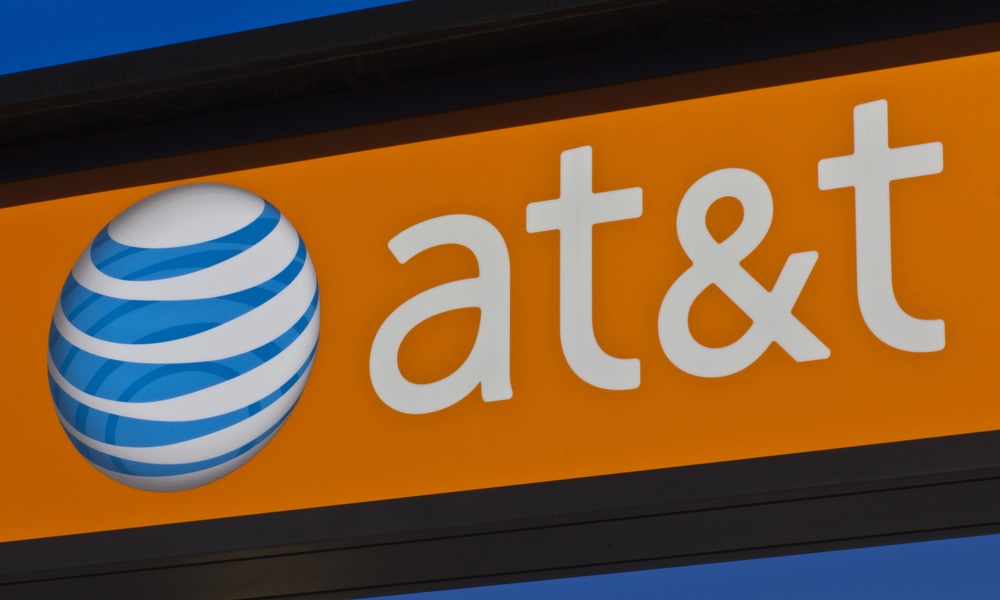
Although T-Mobile won the distinction last month of being the first U.S. carrier to offer 5G in all 50 states, AT&T claims it’s now catching up, with an announcement today that its 5G network is now available nationwide, and accessible to more than 205 million customers in 395 coverage markets across the U.S., according to The Verge.
In addition, AT&T is making 5G available to its customers on a wide range of plans at no additional cost, beginning on August 7th. This includes its Unlimited Starter, Extra, and Elite wireless plans for consumers, as well as business customers on its Unlimited Web-Only, Starter, Performance, and Elite plans.
To be clear, this isn’t AT&T’s misleading “5G Evolution” service, which was the carrier’s controversial attempt to promote its upgraded 4G LTE network as something that it really wasn’t. While AT&T actually agreed to remove 5G Evolution from its marketing campaigns, it actually hasn’t gone so far as to take the “5G E” logo off of its smartphones, which is just going to add the confusion, but unless you see a “5G” on your iPhone without an “E” — which you won’t before Apple releases its new 5G-capable iPhone models this fall — you’re not actually using AT&T’s real 5G network.
What Real 5G Means for AT&T Customers
This latest announcement is about actual 5G service, and AT&T is actually somewhat unique among the big U.S. carriers in that it’s rolled out a mix of the two different 5G technologies that it hopes will allow it to offer both broader and faster coverage than its rivals.
For example, T-Mobile launched its nationwide 5G network back in December, promising 5G coverage in 5,000 cities and towns across the U.S., and with its expansion into Alaska last month, it’s now able to boast being the first carrier to provide 5G coverage in every U.S. state.
The important thing to keep in mind about all wireless frequencies, whether you’re dealing with Wi-Fi or cellular, is that higher frequencies offer faster speeds at the expense of reduced range. There are two primary 5G technologies in use right now: sub-6GHz which as the name implies runs at frequencies under 6GHz, and mmWave which operates in the much faster spectrum of 30GHz and beyond.
T-Mobile has only deployed a low-frequency sub-6GHz network — specifically at 600MHz. This gives it the advantage of very broad coverage, but 5G speeds that aren’t really all that much better than what many customers are already seeing on 4G LTE from rival carriers (although there are other advantages to 5G than just raw speed, such as better performance on congested networks). In fact, following its merger with Sprint, T-Mobile has been phasing out Sprint’s 5G towers, which ran on a better and faster 2.5GHz frequency.
In fact, a report last month by OpenSignal revealed quite a bit about the different speeds you can expect from various 5G carriers, and it placed T-Mobile pretty much at the bottom, while even foreign carriers were eclipsed by Verizon’s 500Mbps+ performance.
The catch with Verizon, however, is that it’s gone with the opposite approach of only deploying mmWave 5G on its network, and because of the extremely short range of mmWave frequencies, Verizon has stuck to deploying it only in a handful of major cities, and even there only in the busier downtown areas. In fact, Verizon was called out earlier this month for making misleading claims about its 5G coverage. In reality, if you’re a Verizon customer, you’re much more likely to be using its 4G LTE network, even if you have a 5G-capable device, since you simply won’t find Verizon 5G service outside of the core of a few major cities.
AT&T on the other hand appears to be trying to strike a balance between the best of both worlds. It’s deploying ultra-fast mmWave in a large number of U.S. cities, while also rolling out a sub-6GHz network in less built-up areas. As AT&T’s VP of technology operations said in a statement to The Verge, it believes that by deploying both technologies, which it’s calling “5G” for the sub-6GHz and “5G+” for the mmWave service, it will be able to offer “the best mix of speeds, latency and coverage” to its customers.
In practical terms, this means that you may be more likely to find solid and fast 5G coverage with AT&T when the iPhone 12 lands this fall just about anywhere within the U.S., and you’re certainly much more likely to be using 5G on AT&T than you will be on Verizon, but since most performance tests being done so far are using average overall speeds nationwide, AT&T’s numbers may be exaggerated by factoring in the mmWave 5G networks that many customers won’t have any access to at all. By comparison, Verizon looks better because it doesn’t have any sub-6GHz to pull its score down, and T-Mobile’s 600MHz network doesn’t benefit from averages that include mmWave.
So much like when 4G LTE first rolled out 8–10 years ago, your mileage will likely very greatly depending on where you live, and if you’re looking for the best 5G performance you can get, you may find yourself shopping around for a different carrier for your new iPhone 12 this fall.
"really" - Google News
July 24, 2020 at 01:15AM
https://ift.tt/32MwWnA
AT&T Promises It Now Offers Nationwide 5G, But What Does That Really Mean? - iDrop News
"really" - Google News
https://ift.tt/3b3YJ3H
https://ift.tt/35qAk7d
Bagikan Berita Ini














0 Response to "AT&T Promises It Now Offers Nationwide 5G, But What Does That Really Mean? - iDrop News"
Post a Comment